So lets just try to take a balanced look at things (because I’m sure Gordon and Barack will be aiming for balance today and tomorrow, if not dietary then economically at least).
The brief:
Mr Oliver has apparently been given a brief to create a menu that showcases the best of seasonal British food and cooking including finding things to represent each of the parts of the United Kingdom. Now some of you may think that ‘best’ ‘British’ and ‘food/cooking’ in the same sentence is something of an oxymoron and that St Jamie is a fool to have accepted the gig. But as we know from past form there is nothing like a challenge to get Jamie’s enthusiasm racing away with him and him saying ‘YES’ before anyone has any chance of stopping him. Even the imminent arrival of his third child is not enough to stop Jamie pouncing on this chance.
Remember it’s a BIG BIG GIG.
So as we proceed through this analysis of the menu lets remember the brief is ‘BEST SEASONAL BRITISH’ cooked for people from 20 different nations with all the restrictions that entails. Because if you were on The Apprentice doing this and you junked the brief straight off Mr Sugar would be firing you right back to where you came from in no time.
The menu:
You’ve probably seen it already but lets see if and how it sticks to the brief:
Starter:
Baked Scottish Salmon with Seashore Vegetables, Broad Beans, Herb Garden Salad, Mayonnaise and Wild Garlic-scented Irish Soda bread
OR
Vegetarian option is Childwickbury Goat’s Cheese with Roast Shallots, Seashore Vegetables, Herb Green Salad and Wild Garlic-scented Irish Soda Bread (no mayo)
Main:
Slow-Roasted Shoulder of Welsh Lamb, very first of the season Jersey Royals, first of the season Asparagus and Wild St George Mushrooms. Mint Sauce and Gravy
OR
Vegetarian option is Lovage & Potato Dumplings with first of the season Asparagus and Wild St George Mushrooms
Dessert:
Hot Bakewell Tart with Home-made Custard
A quick look in any seasonal cooking book or any of the various online seasonality resources will show you that Jamie is potentially quite restricted in some areas e.g. fruit = pretty much nothing, meat = wild pigeon!. And once he has to factor in a whole range of dietary requirements the options get cut further. So lets just be clear here: the guy has to create something uniquely (and identifiably) British and WOW that fits with a plethora of dietary restrictions and a rather thin set of seasonal choices.
So his only option is to get top notch ingredients and try to make them sing.
Starter:
Salmon: in season, very recognisably British, represents Scotland (still part of the UK last time I looked despite the best efforts of may a Scotsman and woman). Obvious choice but shellfish is probably a no no and many might squeal at eel.
Seashore Veg: identified on most sites as sea kale and samphire. Well he’s on the mark with sea kale but I’m a bit doubtful about the possibility of samphire – it’s a shade early for that really but he can hardly have had it grown in a poly tunnel so he must know a secret source. I have seen it growing on the mud flats of Maldon fairly early in previous years so its not impossible. And its very British.
Broad beans: pretty British, very early so these have got to come from under glass, possibly from somewhere like the Isle of Wight or Channel Islands. And before we all go off on one about producing things early under glass lets just remember that they’ve been doing it since way back in the 1500’s – what do you think they used Chelsea for before they built posh houses and football clubs on it!
Herb garden salad: definitely seasonal, not especially British but that will depend on the actual herbs selected and what’s available. Hopefully he’ll have some sorrel or watercress or early spinach in there.
Mayonnaise: not reknowned for being particularly British but it is tasty and we could make a slightly weak argument about it allegedly being brought back from Mahon in Minorca after Richelieu defeated the British there in 1756 (bit tenuous though). I think he should have plumped for a dressing made with rapeseed oil and a herb or fruit vinegar.
Wild garlic soda bread: wild garlic is definitely in season and grows across much of the UK; and soda bread is found both North and South of the border in Ireland so it fits (regardless of your politics on the UK/Irish matter).
Vegetarians: sadly its goats cheese again for them it seems (a stock answer to ‘oh dear how do I cope with the veggie people’) but since good goats cheese is so lovely and a staple of the British food scene these days I’d be happy to opt for this and they get to have the same supporting vegetables.
Main: This is a tough one to call. The options are limited and some of the things on the menu are VERY early in the season. I imagine there’s been a lots of frantic sourcing going on to get some of this stuff but the choices are all well known British options and show the range of possibilities from across the UK
Lamb: of course it is now April! Its a bit early in the season but not impossible to get lamb that’s mature enough – I suspect since its being slow roasted it’ll be close to 1 year old rather than new season. Pretty tough call to find another option when pork and beef are probably both of the menu due to dietary restrictions and everyone would simply roll their eyes if its was chicken being served up.
Jersey Royals: if they are ready I say bring them on, fantastic.
Asparagus: after the cool winter I’m doubtful this is really in season yet but he must have managed to get its somewhere – I love asparagus so I’m quite jealous.
Vegetarians: good to see that the supporting notes are the same as for the meat option, veggies are so often just palmed off with a totally different mushed up irrelevant dish whereas this references back and adds lovage which will be in season.
Dessert: oh dear this is where the controversy really warms up. For a start most people say the real thing is Bakewell Pudding and it’s pretty easy to search out bucket loads of supporting evidence for that assertion. But many of the same sources also suggestion that Bakewell Tart is not such the chav newcomer most of us would have and recipes can be traced back at least to the mid 1800s for dishes that are more tart like less pudding and indeed tarts akin to Bakewell have a heritage going back further across most of the UK. So, as long as St J isn’t just opening a pack of Mr Kipling’s then I’m sure things will be okay. Pudding, dessert, whatever you want to call it there must have been lots of options to consider. I think he’s slightly lost the seasonal plot though here as he could have done something interesting with new seasons rhubarb (like the a wonderful dish I tasted at Northcote Manor in Lancashire earlier this year of Rhubarb Carpaccio, Custard Crumble Parfait, Rhubarb Granita which was real wow), even a simple fruit fool would have done the trick I think (and stopped the arguing about tarts and puddings).
So overall has he met the brief?
Well I’d say he’s well over 90% of the way there with this menu, plus its relatively simple and accessible and crucially for him straightforward to prepare. It’s a meant to be a working dinner not an off the scale gastronomic experience. I can quite imagine that St Jamie will pull it off again and by tomorrow when those who tasted comment we’ll be hearing about how great it was. And if not, well then I’ll eat my words or at the very least some seasonal British food.
Think you can do better? Look out for tomorrow’s post to join in the debate and have the chance to create your own G20 menu moment and also find out some useful resources on British food.
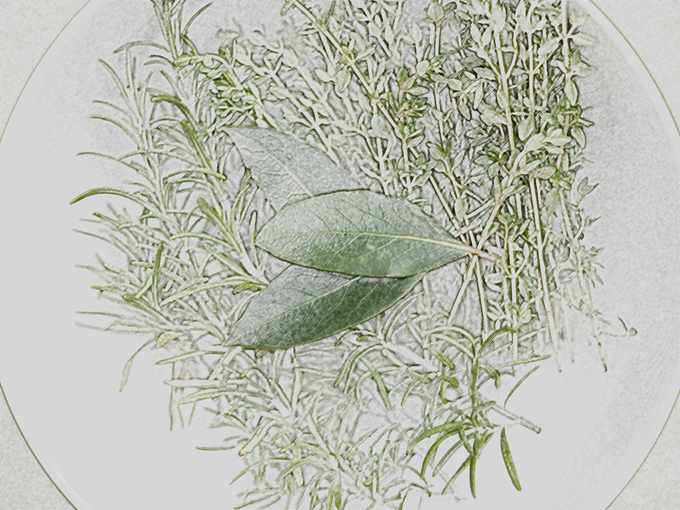
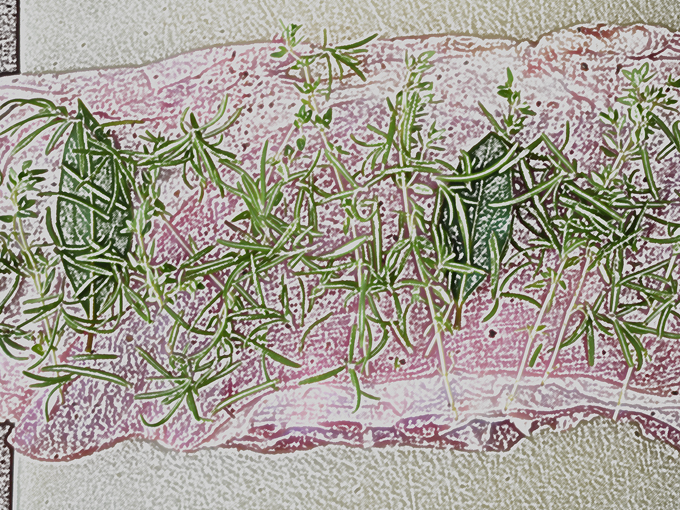
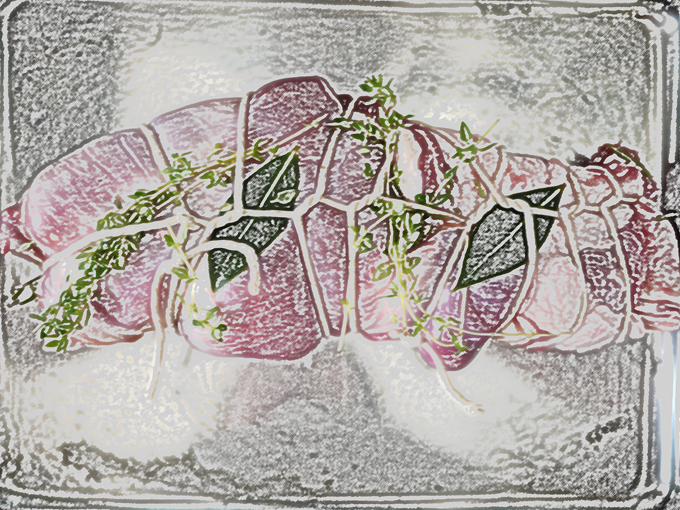
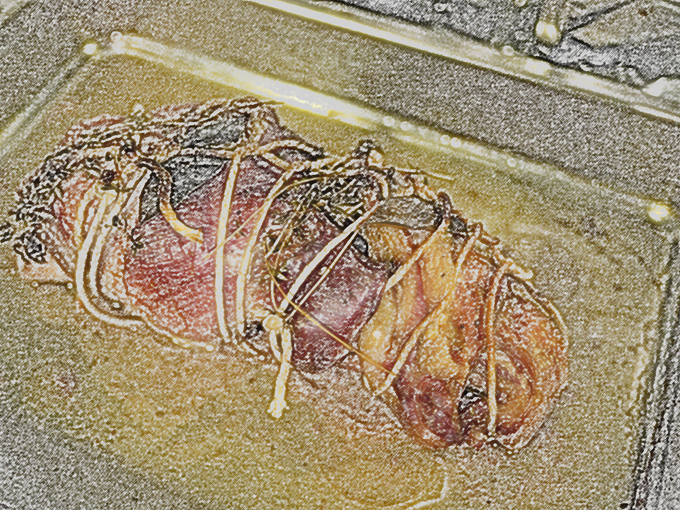
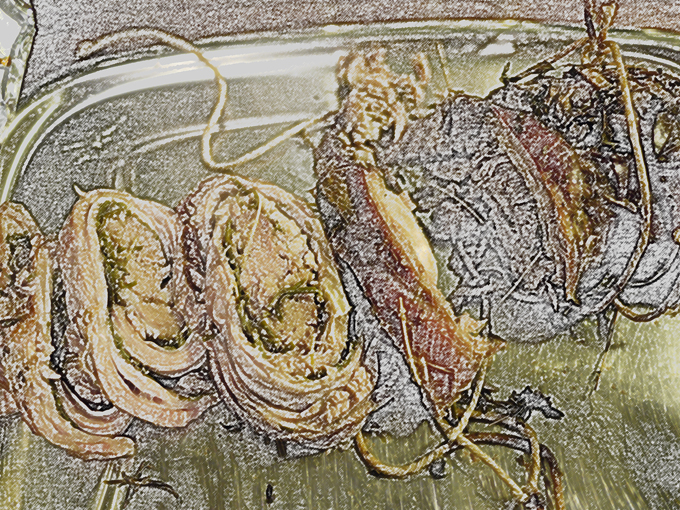




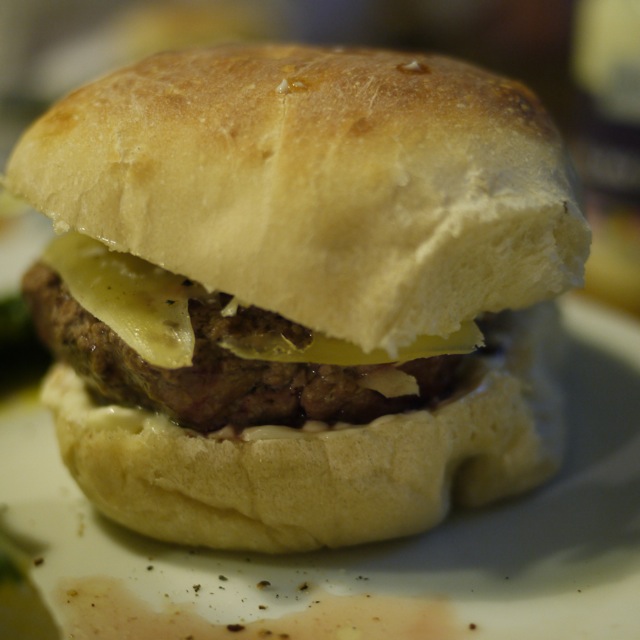
 Get the chicken carcass and any bones you’ve saved from using up the leftovers so far. Strip all the good useful meat of the carcass but don’t be too fussy about this – leaving some meat on the bones will add to the flavour of the final stock. Bung all the bones, any really scrappy meat, the carcass and the skin i.e. anything chicken-y, into the stockpot.
Get the chicken carcass and any bones you’ve saved from using up the leftovers so far. Strip all the good useful meat of the carcass but don’t be too fussy about this – leaving some meat on the bones will add to the flavour of the final stock. Bung all the bones, any really scrappy meat, the carcass and the skin i.e. anything chicken-y, into the stockpot. Next add the vegetables and herbs that are going to help flavour things. Read any cookery book and even if they tell you that you shouldn’t be using leftover roast (ignore them, they are wrong, stick with me, Nigella Lawson, Jamie Oliver and Hugh Fearnly-Whittingstall) they will tell you to add the pretty much holy trinity of onion, carrot and leek – so do that. One medium onion (in quarters), a couple of reasonable size carrots cut in chunks (no need to peel unless you can’t manage to get all the soil off any other way) and a leek (all of it except the very bottom – no throwing those green tops away) again cut into chunks and rinsed so you don’t get sandy soil in the stock. Also good to add is celery – a couple of stacks – chunks again. On the herb/spice front you need some whole black peppercorns (6 or so), a bay leaf or two and a spring of parsley or thyme.
Next add the vegetables and herbs that are going to help flavour things. Read any cookery book and even if they tell you that you shouldn’t be using leftover roast (ignore them, they are wrong, stick with me, Nigella Lawson, Jamie Oliver and Hugh Fearnly-Whittingstall) they will tell you to add the pretty much holy trinity of onion, carrot and leek – so do that. One medium onion (in quarters), a couple of reasonable size carrots cut in chunks (no need to peel unless you can’t manage to get all the soil off any other way) and a leek (all of it except the very bottom – no throwing those green tops away) again cut into chunks and rinsed so you don’t get sandy soil in the stock. Also good to add is celery – a couple of stacks – chunks again. On the herb/spice front you need some whole black peppercorns (6 or so), a bay leaf or two and a spring of parsley or thyme. Last year we had a glut of very green tomatoes and a handful of red ones (just yummy) and we were still getting tomatoes ripening in late October. This wasn’t some special strain we’d tried but the summer weather, which never really got hot or warm enough for the tomatoes to ripen – made great chutney though.
Last year we had a glut of very green tomatoes and a handful of red ones (just yummy) and we were still getting tomatoes ripening in late October. This wasn’t some special strain we’d tried but the summer weather, which never really got hot or warm enough for the tomatoes to ripen – made great chutney though. As well as the vegetables its time to replant the herb section of the garden. We’ve had rosemary, chives, sage and oregano for a long time but none of them do quite as well as we’d like so this year we (or rather my husband) are moving the herb bed to a slightly sunnier location; and anyway the birds that perch in the neighbours giant eucalyptus tree that partly shades the bed do untold damage to the herb plants rendering them pretty useless for cooking with. A new spot is being prepared with some good compost added (home made of course – there’s nothing as good as a bit of composting to make you come over all
As well as the vegetables its time to replant the herb section of the garden. We’ve had rosemary, chives, sage and oregano for a long time but none of them do quite as well as we’d like so this year we (or rather my husband) are moving the herb bed to a slightly sunnier location; and anyway the birds that perch in the neighbours giant eucalyptus tree that partly shades the bed do untold damage to the herb plants rendering them pretty useless for cooking with. A new spot is being prepared with some good compost added (home made of course – there’s nothing as good as a bit of composting to make you come over all